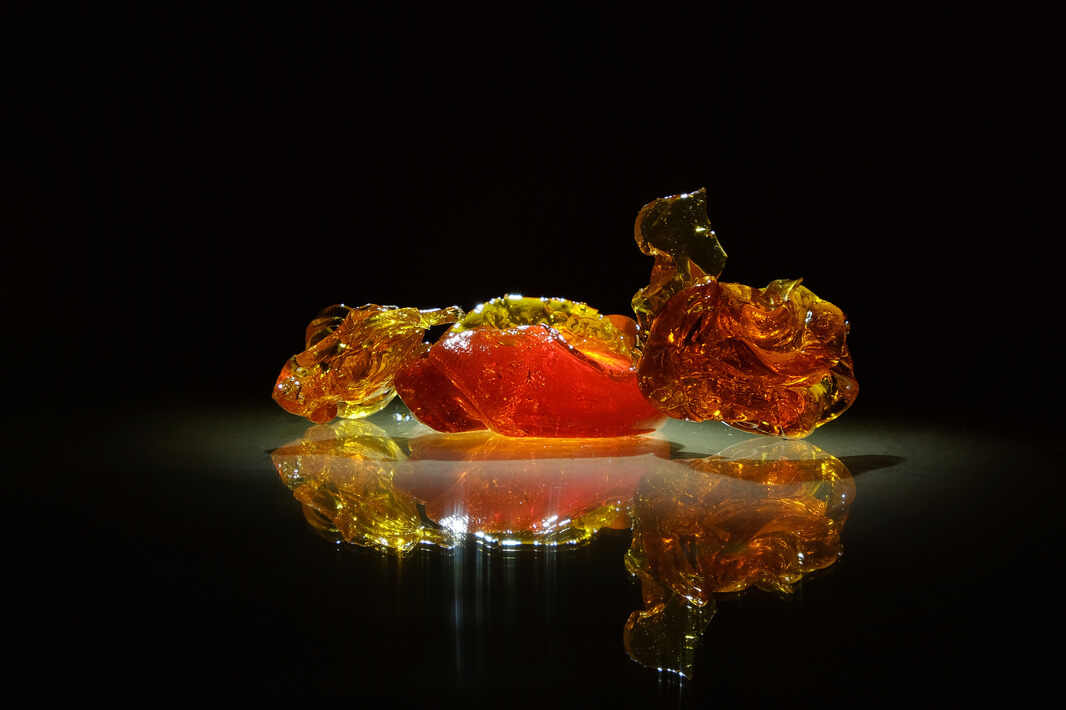About
What's the Difference Between Resin, Live Resin, and Rosin?
These days, cannabis is widely available, specifically in concentrates. They come in many forms, with similar-sounding names. So, they can be confusing. The terms "rosin," "living resin," and "resin" can confuse people. They may wonder about the differences between them. To consider how to tell them apart from each other, let's break them down a bit.

- Resin
If you used marijuana before it was legalized, you know resin. Even if you don't scratch it out to smoke separately, you still see it every time you smoke. This is the gunk, brown or black, that collects in your bongs or pipes after you ingest smoke. "Resin" also refers to a sticky material on cannabis flowers and sugar leaves. It is filled with trichomes and terpenes.
- Cured Resin
What makes cured resin different from regular "resin"? "Resin" is often misapplied. It's used for concentrates made with solvents like hydrocarbons. Yet, it more often refers to the sticky secretions on cannabis flowers. In stores, "resin" almost always means a concentrate, not the plant. Dried and cured cannabis flowers are the base product that makes cured resin. It's often referred to as dead resin. It is processed using heat, pressure, and a solvent-based hydrocarbon extraction. This produces some THCa crystals, a result of the sauce's high terpene content.
- Live Resin
The only primary difference between cured and live resin is their source. It affects which terpenes and flavonoids survive. The latter is made from raw, fresh, uncured material. The former gets its name from its starting place—dried blooms. To make live concentrates, you must remove the trichomes from the fresh plant. This is done by quickly freezing the sugar leaves and blossoms right after harvest. This prevents the plant from drying or decomposing. This practice aids in the retention of terpenes, which enhances the flavor of the end product.
How do You Make Live Resin?
To make the final product, either fresh or frozen cannabis flowers are mixed with a solvent. This forms live resin. Then, the solvent is vacuum expelled and evaporated at low temperatures. Unlike fresh-frozen cannabis, drying and curing can lose up to 50% of the plant's terpenes. Immediate freezing can stop this loss.
- Rosin
Compared to flower or cured resin, rosin is a unique style of concentrate that is made in a special way. Rosin is made without chemical solvents. Resin concentrates, like shatter, wax, and distillate, are made with them. Solventless extractions use heat, pressure, or mechanical means. They separate the plant's resin glands, called trichomes. They avoid chemicals like butane or propane, which are in solvent-based processes. Applying heat and pressure to cannabis trichomes produces rosin. It has an orange to milky white color. Other slang names for it include jam, sap, (SHO) solventless hash oil, or rosin batter. Rosin is a purer and higher-terpene substance than resin.
- Live Rosin
Live rosin is made from fresh, living plants, like cured resin and live resin. Live rosin is tastier and more potent than regular rosin. It's made from "live" elements. In general, live plants can make any kind of concentrate. This includes popular types like live rosin, sugar, batter, butter, and resin.
It might feel a bit confusing at first. But, it gets easier to appreciate both once you know the differences between them.
What's Different Between Live Resin and Live Rosin?
Live rosin and live resin are the best extracts. They preserve the cannabis plant's original aromas and flavors. Since they both are high in terpenes, they most likely taste and smell stronger and more vividly. The principal distinction lies in the manner of manufacture.
To make live rosin, prepare live bubble hash. Freeze and agitate the weed resins. Then, pressurize and heat it to extract the rosin. It's very labor-intensive and complex, providing poorer quality compared to these different methods. In contrast, live resin uses a solvent to dissolve the resin and then eliminates it later on.
Many things work well in these devices, like live rosin or live resin. If you have a portable vape, try some disposable cartridges. They contain different cannabis products. The products are not in all cartridge types. So, they might be used with e-rigs or portable vaporizers.
What Types of Rosin and Live Resin Exist Then?
Marijuana oil is modified in texture into all sorts of forms of live rosin and live resin. Common forms available:
Diamonds and Sauce: Crystalline THCa is often combined with something called "sauce." It's a high terpene extract. In a golden to amber-brown liquid, it shows up in the form of transparent crystals. THCa is the main active ingredient in cannabis and a precursor to THC. The sauce has a higher terpene than cannabinoid content.
Batter/Badder: This concentration is a yellow-brown cake icing or cookie batter. It is high in terpenes.
THC Diamonds: Like the crystals in sauce, they are pure THC. THCa is pure and is found in THC diamonds.
Sugar: Live sugar is a variety of live resin. It resembles the coarsely chopped texture of honeycomb sugar crystals. Though the crystals are considerably smaller, they resemble sauce and diamonds.
- Die aufregende Welt des Glücksspiels im Online-Casino Pin Up
- O que dizem sobre a jogabilidade no Pin Up Casino?
- Magic Win Casino: The Best Online Casino in Ireland
- Nomini Online Casino Offers You the Latest and Most Exciting Games that It's Time to Try Out
- Paediatric Physiotherapy, Supporting Children’s Growth and Development